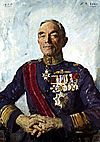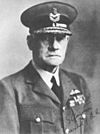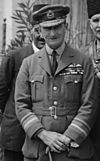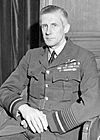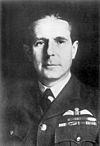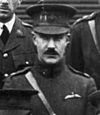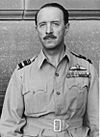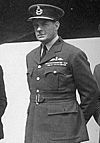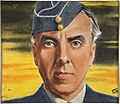RAF India facts for kids
Quick facts for kids RAF India (1920-38)Air Forces in India (1938-47) |
|
|---|---|
| Active | May 1918–December 1947 |
| Country | |
| Branch | |
| Type | Command |
| Role | Control of RAF Forces in British India |
RAF India, also known as Air Forces in India from 1938 to 1947, was a special part of the Royal Air Force (RAF). It was like the RAF's main base in India. This group was active from 1918 until India became independent in 1947. It worked alongside the British Army that was stationed in India.
Contents
How RAF India Began
This command started with units from the Royal Flying Corps in India. In November 1915, a group called No. 31 Squadron was sent to India. They arrived in December at a place called Nowshera. This squadron, along with its aircraft, then moved to Risalpur.
They spent a lot of time training there. Their planes would often fly patrols over the North-West Frontier areas. In 1917, a second squadron, No. 114 Squadron, joined them. When the RAF was officially formed in May 1918, there were 80 officers and 600 men in the air force in India.
Challenges Before World War II
During the 1920s and 1930s, RAF India faced many problems. It did not get enough money. It was also under the control of the main army commander in India. In July 1938, a report by Thomas Inskip showed how outdated the command's aircraft were. The report said the planes were "deplorable" and could not fight modern aircraft.
At that time, RAF India received only a small part of the money for defense in British India. It got less than what was given to the 16 horse-riding army groups.
RAF India During World War II
During World War II, the air forces in Southeast Asia became a new group. This group was called Air Command, South East Asia (ACSEA). It was formed on December 30, 1943. Air Chief Marshal Sir Richard Peirse led this group. He had been in charge of Air Forces in India since March 1942.
ACSEA was mostly based in India. It received its support from the RAF's Air Forces India. By July 1944, ACSEA included several important groups. These included No. 222 Group RAF, No. 225 Group RAF, and No. 229 Group RAF. It also included Eastern Air Command.
Eastern Air Command had different parts, like the Strategic Air Force. This force included American and British bomber groups. There was also the U.S. Tenth Air Force with fighter and transport planes. The RAF Third Tactical Air Force also had many groups. A Photographic Reconnaissance Force took pictures from the air.
By January 1945, other groups were part of ACSEA. These groups handled maintenance, training, and administration. They were spread across different parts of India. For example, No. 225 Group RAF protected southern India and the coastline.
Later, the leaders of Air Headquarters India changed. By the time Hugh Walmsley became the leader, the command was again called RAF India.
After the War: Changes and Protests
RAF Strikes in 1946
After World War II, many RAF stations in India saw protests and strikes. These began on January 22, 1946. The airmen refused to follow orders. This was because they were being sent home very slowly. They also saw British ships being used to take American soldiers home instead.
The protests started in Maripur or nearby Karachi. They quickly spread to over 60 RAF stations. Nearly 50,000 men were involved. The protests reached places like Burma, Ceylon, Singapore, and Egypt. These peaceful protests lasted for several days.
The British Government said there were not enough ships to send everyone home quickly. However, later reports showed that British troops were kept in India on purpose. This was to help control any possible unrest from the movement for India's independence. Some airmen faced military trials for their actions.
These protests were important. They led to similar actions by the Royal Indian Air Force. Later, the Royal Indian Navy also had protests in February 1946. In that event, sailors on 78 ships refused orders. Lord Wavell, who was in charge of India at the time, said that the RAF's protests likely influenced the navy's actions.
Closing Down RAF India
After the war, the RAF started to reduce its presence in India. Many of the large RAF groups were closed down or changed. For example, No. 222 Group RAF became AHQ Ceylon in October 1945. Other groups were renamed as Indian Groups. This meant they were becoming part of the new Indian air force.
AHQ India was reformed on April 1, 1946. It took over the role of another large group. By this time, 12 RAF squadrons remained in India. AHQ India was then controlled by both the Indian Government and the Air Ministry.
On August 15, 1947, India gained independence. The air force was then split into two new forces: the Royal Indian Air Force and the Royal Pakistan Air Force. AHQ India was officially closed down. Air Marshal Hugh Walmsley, who was the last commander of RAF India, took on a new role. He became the Deputy Supreme Commander (Air) for both India and Pakistan.
On November 10, 1947, Walmsley left his position and returned to the UK. His deputy, Air Commodore Richard Jordan, closed the remaining headquarters on November 17. Finally, on December 15, the Royal Indian Air Force took control of Palam Air Station from the RAF. The communication squadron also became part of the Royal Indian Air Force.
Commanders of RAF India
Commander, Indian Group (1919 to 1920)
| No. | Name | Took office | Left office | Time in office | |
|---|---|---|---|---|---|
| 1 | Air Commodore Tom Webb-Bowen CB, CMG (1879–1956) |
20 September 1919 | 27 January 1920 | 129 days |
Air Officer Commanding RAF, India (1920–1938)
| No. | Name | Took office | Left office | Time in office | |
|---|---|---|---|---|---|
| 1 | Air Commodore Tom Webb-Bowen CB, CMG (1879–1956) |
27 January 1920 | 31 December 1922 | 2 years, 338 days | |
| 2 | Air Vice Marshal Philip Game CB, DSO (1876–1961) |
31 December 1922 | 5 November 1923 | 309 days | |
| 3 | Air Marshal Sir Edward Ellington KCB, CMG, CBE (1877–1967) |
5 November 1923 | 27 December 1926 | 3 years, 52 days | |
| 4 | Air Marshal Sir Geoffrey Salmond KCB, KCMG, DSO (1878–1933) |
27 December 1926 | 6 February 1931 | 4 years, 41 days | |
| 5 | Air Marshal Sir John Miles Steel KCB, KBE, CMG (1877–1965) |
6 February 1931 | 2 March 1935 | 4 years, 24 days | |
| 6 | Air Chief Marshal Sir Edgar Ludlow-Hewitt KCB, CMG, DSO, MC (1886–1973) |
2 March 1935 | 29 September 1937 | 2 years, 211 days | |
| 7 | Air Marshal Sir Philip Joubert de la Ferté KCB, CMG, DSO (1886–1973) |
29 September 1937 | 27 December 1938 | 1 year, 89 days |
Air Officer Commanding-in-Chief, Air Forces in India (1938–1947)
| No. | Name | Took office | Left office | Time in office | Ref | |
|---|---|---|---|---|---|---|
| 1 | Air Marshal Sir Philip Joubert de la Ferté KCB, CMG, DSO (1886–1973) |
27 December 1938 | 6 October 1939 | 283 days | ||
| 2 | Air Marshal Sir John Higgins KCB, KBE, DSO, AFC (1875–1948) |
6 October 1939 | 26 September 1940 | 356 days | — | |
| 3 | Air Marshal Sir Patrick Playfair KCB, CB, CVO, MC (1889–1974) |
26 September 1940 | 6 March 1942 | 1 year, 161 days | — | |
| 4 | Air Chief Marshal Sir Richard Peirse KCB, DSO, AFC (1892–1970) |
6 March 1942 | 27 April 1943 | 1 year, 52 days | — | |
| 5 | Air Marshal Sir Guy Garrod KCB, OBE, MC, DFC (1891–1965) |
27 April 1943 | 8 March 1944 | 316 days | — | |
| 6 | Air Vice Marshal Meredith Thomas CSI, CBE, DFC, AFC (1892–1984) |
8 March 1944 | 1 April 1946 | 2 years, 24 days | — | |
| 7 | Air Marshal Sir Roderick Carr KBE, CB, DFC, AFC (1891–1971) |
1 April 1946 | 22 November 1946 | 235 days | — | |
| 8 | Air Marshal Sir Hugh Walmsley KCIE, CB, CBE, MC, DFC (1898–1985) |
22 November 1946 | 15 August 1947 | 252 days | — |
(On 15 August 1947, the unified RIAF was separated into the Royal Indian Air Force and the Royal Pakistan Air Force)
Deputy Supreme Commander (Air) India and Pakistan, and Air Officer Commanding RAF Units in India and Pakistan (1947)
| No. | Name | Took office | Left office | Time in office | Ref | |
|---|---|---|---|---|---|---|
| 1 | Air Marshal Sir Hugh Walmsley KCIE, CB, CBE, MC, DFC (1898–1985) |
15 August 1947 | 10 November 1947 | 87 days | ||
| 2 | Air Commodore Richard Jordan CB, DFC (1902–1994) |
10 November 1947 | 17 November 1947 | 7 days |
Images for kids
See Also
- Royal Indian Air Force
- Royal Indian Navy mutiny
- History of the Indian Air Force
- List of historical aircraft of the Indian Air Force
- List of Royal Air Force commands



